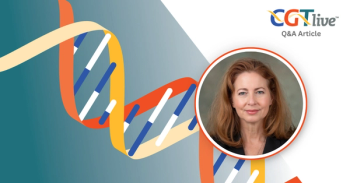
Radiation-Induced Xerostomia Gene Therapy Shows Promise in Phase 1 Trial
No dose-limiting toxicities or treatment-related serious adverse events were reported among 24 treated patients.
The trial enrolled 24 participants with RIX who were divided across 8 treatment arms, with 3 patients assigned to each arm. AAV2-hAQP1 was administered via the Stensen's duct to either 1 (unilateral) or both (bilateral) of the parotid glands. Patients in the unilateral cohorts received the therapy at 4 dose levels: 1x1011 vg/gland, 3x1011 vg/gland, 1x1012 vg/gland, and 3x1012 vg/gland. Meanwhile, patients in the bilateral cohorts received doses at 3x1010 vg/gland, 1x1011 vg/gland, 3x1011 vg/gland, and 1x1012 vg/gland.
The trial included patients aged 18 years or older who have a history of receiving radiation therapy for
Among the 12 patients treated in the bilateral arms, who had a minimum follow-up of 6 months, 10 patients reported symptoms of dry mouth as “better” on the Global Rate of Change (GRCQ) questionnaire at the 6-month mark. Among the 12 patients treated in the unilateral arms, who had a minimum follow-up of 12 months, 8 patients reported symptoms of dry mouth as “better” on the Global Rate of Change (GRCQ) questionnaire after treatment. All 18 of these patientsreported changes that were “important” or “very important” according to GRCQ criteria. Improvements were reported to persist through 2 years in the 3 patients that reached a 2-year follow-up, and a patient who reached 3 years of follow-up maintained the maximum score of 7. None of the 24 patients reported a worsening of symptoms after treatment.
On the Xerostomia Questionnaire (XQ) PRO measure scoring scale, 17 of the 24 patients treated reported a “clinically meaningful” improvement of more than 8 points after treatment. Furthermore, 6 patients in the unilateral cohorts and 10 patients in the bilateral cohorts reported a 10 point or greater “transformative” improvement at 6 months post-treatment. Measures of whole saliva flow indicated that patients in the bilateral cohorts achieved an average percentage change of 100% from baseline at 6 months, with overall flow rate reaching an average of 0.4mL/min. In terms of safety, there have been no dose-limiting toxicities or treatment-related serious adverse events reported among the 24 treated participants as of the November 30, 2022, data cut-off date.
“We are very encouraged by the clinical data in both unilateral and bilateral cohorts demonstrating the safety, efficacy, and durability of AAV2-hAQP1 in grade 2/3 radiation-induced xerostomia,” Alexandria Forbes, PhD, president and chief executive officer, MeiraGTx, said in a statement regarding the news. “Not only does this therapy continue to be safe and well tolerated, but we are seeing durability of effect at 2 and even 3 years for patients who have reached those timepoints.”
The study excluded patients with a history of systemic autoimmune diseases affecting the salivary glands; active use of tobacco products; a white blood cell count less than 3000/μL, an absolute neutrophil count less than 1500/μL, hemoglobin less than 10.0 g/dL, platelet count less than 100,000/μL, or an absolute lymphocyte count less than or equal to 500/μL; alanine aminotransferase and/or aspartate aminotransferase greater than 1.5 × the upper limit of normal (ULN), alkaline phosphatase greater than 1.5 × ULN, or total bilirubin greater than 1.5 × ULN with any elevation of liver enzymes; or an estimated glomerular filtration rate less than 60 mL/min/1.73 m2 (using the Modification of Diet in Renal Disease equation). Additional exclusion criteria related to the status of the primary malignancy and patients’ treatment history, health status, and health history.
MeiraGTx has announced intention to begin a phase 2 clinical trial for AAV2-hAQP1 in the first half of next year. The randomized, double-blind, placebo-controlled trial will investigate bilateral administration with 2 active doses of the gene therapy. The company expects that the trial’s primary end point will be the change from baseline in salivary flow rate at 12 months, and that key secondary end points will include the change from baseline in the XQ and GRCQ measures of patient reported outcomes at 12 months.
“These updated data from all 24 patients treated in our AQUAx Phase 1 study suggest that our novel gene therapy, AAV2-hAQP1, could have a disease modifying effect in this large and underserved patient population,” Forbes added to the statement. “We look forward to further advancing this wholly-owned program into a phase 2 study in the first half of 2023.”
REFERENCE
MeiraGTx announces positive clinical data from the AQUAx phase 1 clinical study of aav2-haqp1 for the treatment of grade 2/3 radiation-induced xerostomia. News release. MeiraGTx Holdings plc. December 13, 2022. https://investors.meiragtx.com/news-releases/news-release-details/meiragtx-announces-positive-clinical-data-aquax-phase-1-clinical
Newsletter
Stay at the forefront of cutting-edge science with CGT—your direct line to expert insights, breakthrough data, and real-time coverage of the latest advancements in cell and gene therapy.

















































